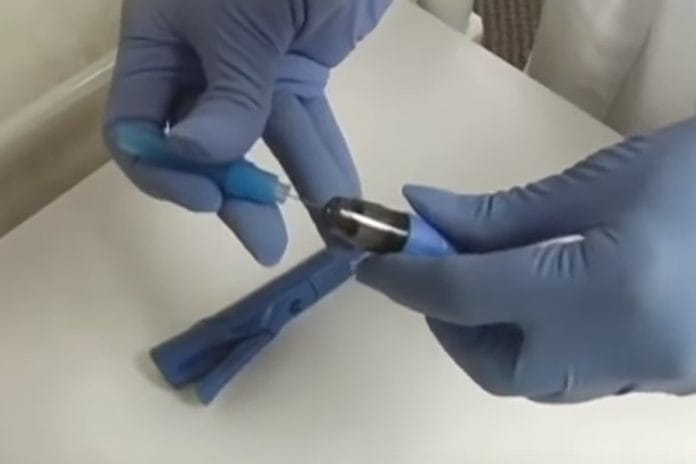Test Your Oraqix® Non-injectable Anesthesia Knowledge!
Disclosure: We value transparency at Today’s RDH. This quiz is sponsored content from Dentsply Sirona Preventive as part of our sponsored partner program.
Oraqix, a combination of lidocaine and prilocaine, is uniquely combined with a patented, thermosetting system to deliver pain relief where it’s needed. Combining both of these amides into a single treatment provides dual benefits that are important for creating an appropriate anesthetizing effect - fast onset and a duration that should be long enough to work for the entire treatment.
Learn more about Oraqix® here.
Now let's test your Oraqix® knowledge!
Oraqix® is a non-injectable anesthesia containing which two anesthetics?
Oraqix® non-injectable anesthetic gel contains 2.5% lidocaine and 2.5% prilocaine in a eutectic mixture. A eutectic mixture is a mixture of two or more components which usually do not interact to form a new chemical compound but, at certain ratios, inhibit the crystallization process of one another resulting in a system having a lower melting point than either of the components. The eutectic mixture of Oraqix® has a melting point below room temperature, therefore both local anesthetics exist as liquid oils rather than as crystals. Oraqix® contains poloxamer excipients, which show reversible temperature-dependent gelation. Together with the lidocaine-prilocaine 1:1 mixture, the poloxamers form a low-viscosity fluid system at room temperature and an elastic gel in the periodontal pocket.1
1. Oraqix FDA Drug Label. Retrieved from https://www.accessdata.fda.gov/drugsatfda_docs/label/2010/021451s007lbl.pdf
Lidocaine and prilocaine belong to the ester class of local anesthetics. Esters primarily metabolize in the liver.
Lidocaine and prilocaine belong to the amide class of local anesthetics. “The primary site of biotransformation (metabolism) of amide drugs is the liver. Virtually the entire metabolic process occurs in the liver for lidocaine, mepivacaine, articaine, etidocaine, and bupivacaine. Prilocaine undergoes primary metabolism in the liver, with some also possibly occurring in the lung.”1
1. Malamed, S.F. Handbook of Local Anesthesia. 5th Edition. Mosby, St. Louis, 2004.
The primary action of local anesthetics, such as lidocaine and prilocaine in Oraqix®, is to block potassium channels, thus blocking impulse conduction.
“The primary action of local anesthetics in producing a conduction block is to decrease the permeability of the ion channels to sodium ions. Local anesthetics selectively inhibit the peak permeability of sodium, whose value is normally about five to six times greater than the minimum necessary for impulse conduction. Local anesthetics reduce this safety factor, decreasing both the rate of rise of the action potential and its conduction velocity. When the safety factor falls below unity, conduction fails, and nerve block occurs. Local anesthetics produce a very slight, virtually insignificant decrease in potassium conductance through the nerve membrane.”1
1. Malamed, S.F. Handbook of Local Anesthesia. 5th Edition. Mosby, St. Louis, 2004.
Administration instructions for Oraqix® state two applications are required. The first application of Oraqix® gel should be at the gingival margin; the second application is to fill the periodontal pocket with Oraqix® gel.
The instructions for Oraqix® state two applications are required. They state, “Apply Oraqix® on the gingival margin around the selected teeth using the blunt-tipped applicator included in the package. Wait 30 seconds, then fill the periodontal pockets with Oraqix® using the blunt-tipped applicator until the gel becomes visible at the gingival margin. Wait another 30 seconds before starting treatment.”1
1. Oraqix FDA Drug Label. Retrieved from https://www.accessdata.fda.gov/drugsatfda_docs/label/2010/021451s007lbl.pdf
After Oraqix® application, waiting longer than 30 seconds to begin treatment enhances the anesthetic effect.
“The onset of local anesthetic effect after application of Oraqix® occurs by 30 seconds and a longer waiting time does not enhance the anesthetic effect. Anesthetic effect, as assessed by probing of pocket depths, lasted for about 20 minutes (individual overall range 14 – 31 minutes).”1
1. Oraqix FDA Drug Label. Retrieved from https://www.accessdata.fda.gov/drugsatfda_docs/label/2010/021451s007lbl.pdf














